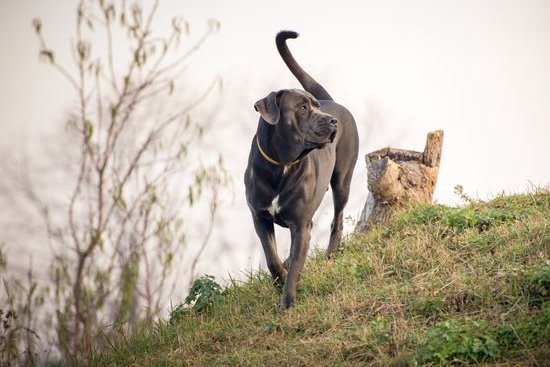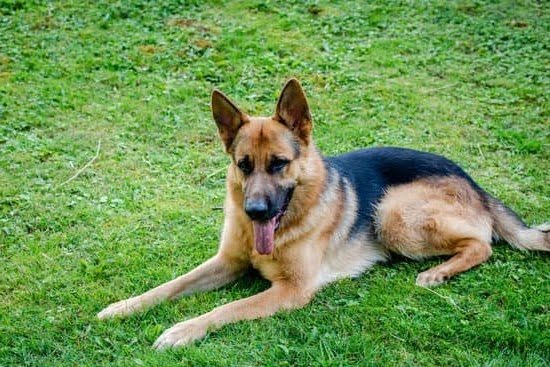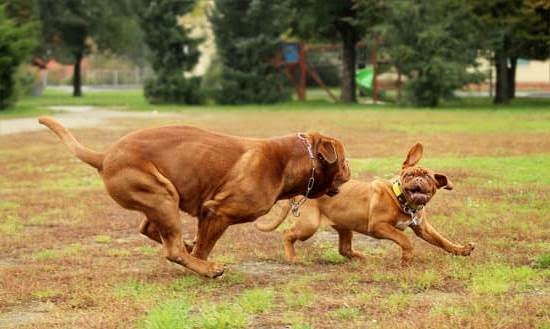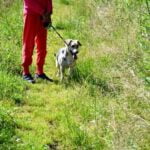Introduction
Training a dog not to eat cat food is important for the health and wellbeing of both animals. Dogs can suffer serious digestive issues if they eat cat food which often contains too much protein for their systems. Cats, on the other hand, need the special nutrients found in their own food, and if a dog eats all or most of it, the cat may become malnourished. In addition, cats can be territorial about their food so training your dog to leave the cat’s food alone helps prevent conflicts between them. Finally, eating from another’s food can be considered disrespectful behavior by some pet owners, so learning how to keep your dog away from its feline friend’s meal can ensure that everyone in your home remains polite and respectful towards each other.
Setting Boundaries
It is important to set clear boundaries when trying to teach a dog not to eat cat food. One way is to create special guidelines for each type of pet food so that the dog understands where their own food ends and the cat’s food begins. You can set up a rule that prohibits your dog from entering the area of your home where the cat’s food is kept, or designate certain areas in which certain types of pet food are allowed. It also helps to put the cat’s bowl higher up, as it keeps it out of range for most dogs.
It may also be helpful to block off access to any pet-food-filled shelves or cupboards with safety gates or child locks to keep dogs out completely. Additionally, pick up bowls and any remaining pet food right after feeding times. Make sure all other pets are finished eating before allowing your dog in throughout the day, or store uneaten portions of each type of pet food separately if needed larger portions must be left out. Always clean up spills immediately and prevent scavenging by covering waste bins and disposing of garbage quickly and securely. Finally, reinforce good behavior whenever possible by providing rewards like treats when your pup refrains from consuming cat food.
Keeping Your Pets Apart
One of the most effective ways to train a dog not to eat cat food is by creating a separate feeding area. It’s important to understand that dogs and cats have very different dietary needs and they should never share the same food bowl. To create a separate feeding area, it’s advisable to keep their food dishes in different rooms, making use of baby gates or other barriers if necessary. This will help ensure that the dog does not have access to the cat’s food dish. Additionally, it’s important to choose appropriate pet-proof trash cans for both animals and make sure yourself or your family members do not leave open containers of pet food where dogs can get into them. Doing this will limit the opportunity for your dog to eat from the cat’s dish – and giving appropriate treats and food rewards as part of training can promote better behavior overall.
Feeding Schedule
When training a dog not to eat cat food, it is important to set a feeding schedule for both the pets that should be adhered to. This means creating specific times of day when each pet will get his or her meal, ensuring that neither animal’s food overlaps with the other’s mealtime. Provide cats and dogs with meals at different times or put up barriers between them such as physical boundaries and gates if necessary. Make sure your cat has access to their food at all times by keeping it off the floor or in a separate area where the dog cannot access. You can also use exercise pens, expandable gates, and other barriers to limit access between the two animals while they’re eating. Finally, you can also place blocks on your counters near their food bowls so your dog can’t jump up and grab their cat’s food.
Supervise Your Dog
When you are trying to train a dog not to eat cat food, it is important that you supervise your dog during mealtime. Make sure he is always in the same room with a visual line of sight when his meal is being served. This will help keep him from getting tempted by the cat’s food. When serving meals, use a designated area specifically for your dog’s food bowl. Move your dog away from the cat’s food bowl while they both eat and do not let him wander freely around the kitchen or other dining areas where the cat tends to feed. If he does show interest in the cat’s food, redirect him firmly but calmly and make sure he eats only his own portion of food before allowing free access again. Use positive reinforcement techniques like praise, petting and treats when your dog is behaving well during meal times, showing them rewards for their obedience. Establish appropriate behaviors through repetition so that over time it becomes a habit for them to stay away from their feline companion’s meal.
Enrichment and Exercise
Training a dog not to eat cat food is an important part of dog ownership and can be achieved by providing them with appropriate enrichment activities and ample exercise. Enrichment activities give the dog mental stimulation and help them remain focused during training sessions. Examples of enrichment activities include having puzzle toys that require the dog to think through in order to gain their reward; having interactive food dispensers where the dog needs to work for their meal; or getting hidey-holes where treats are hidden for the dog to find. Exercise is also important for dogs as it offers physical stimulation, allowing the energy they need to expel in order to keep them well trained. Incorporating a variety of enjoyable physical activities such as running, walking, swimming, fetching, tug-of-war, etc. into their daily routine will help keep your pup satisfied and less likely to wander off in search of other snacks such as cat food. Providing enrichment activities and exercising your pup often are both key components in ensuring your canine companion is well trained not to eat cat food!
Rewards
Training your dog on how to not eat cat food is essential if you want the members of your home to have a harmonious living environment. To teach your dog that cat food is off-limits, you’ll need to create a strong deterrent and reward good behavior. Here are some tips for achieving this:
1. Make clear rules around the house, such as always separating and keeping pet food in different rooms and ensuring that no pet can access another one’s bowl.
2. If you spot your dog about to eat cat food, firmly say “No!” or another command word which indicates that it should stop what it’s doing immediately (such as “Leave It!”).
3. Once they break away from the cat food, reward them with verbal praise and a treat – this positive reinforcement will help engrain the rule of not eating dangerous cat food.
4. Put measures into place such as out of reach shelves and using motion sensors so that when your pet approaches the shelf where cat food is kept, they will be alerted but unable to access it.
5. Consider enrolling in training classes where professional instructors can give you more tips and techniques on how to effectively train your pup without giving in to bad behaviors like eating cat food . This can also be an opportunity for both you and your pup to bond with each other in a fun yet educational way.
Conclusion
Training a dog not to eat cat food can be an arduous task. It is important to establish clear boundaries when introducing a dog and cat into a home. Allowing the animals to mingle can create confusion as to which food will be theirs, resulting in cross-contamination of diets. Having two separate bowls and keeping them in separate parts of the house will help keep the animal’s diets segregated. Setting consequences such as verbal discipline or confinement for bad behavior is necessary for teaching dogs acceptable behavior when it comes to mealtime etiquette. Additionally, providing plenty of interactive toys during play sessions will encourage dogs to reach for their designated toys rather than the cat’s food dish. As with any training program, consistency and reinforcement are key tools needed for success. With a combination of healthy boundaries, discipline, encouragement and positive rewards, owners can train their dog not to eat cat food while promoting responsible eating habits.

Welcome to the blog! I am a professional dog trainer and have been working with dogs for many years. In this blog, I will be discussing various topics related to dog training, including tips, tricks, and advice. I hope you find this information helpful and informative. Thanks for reading!





